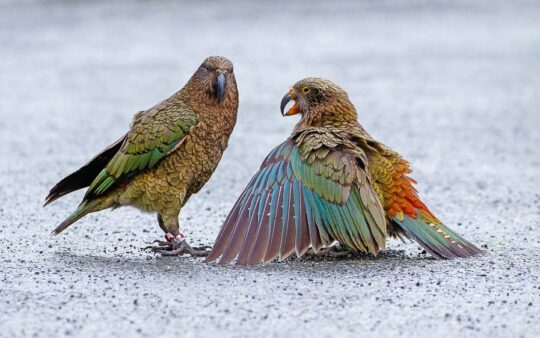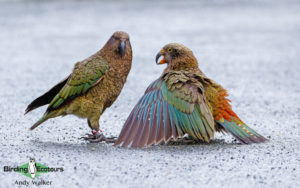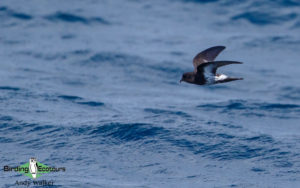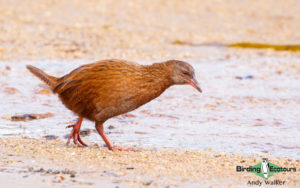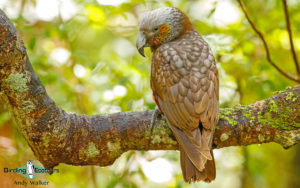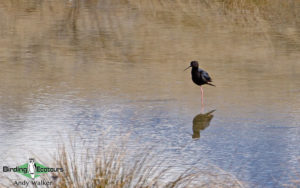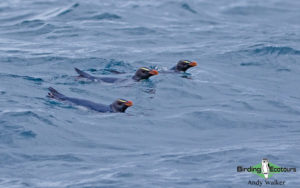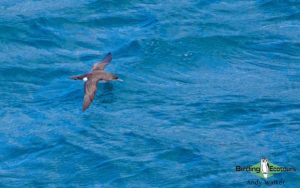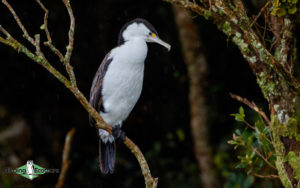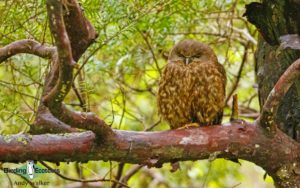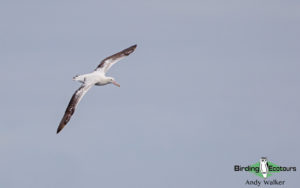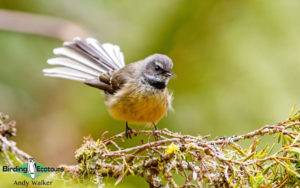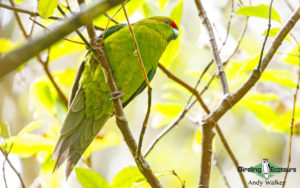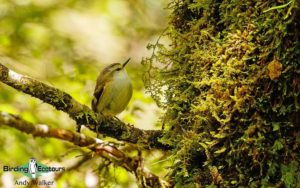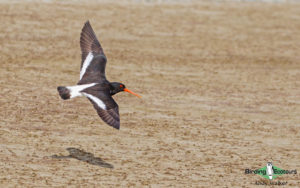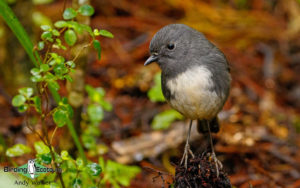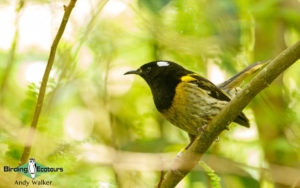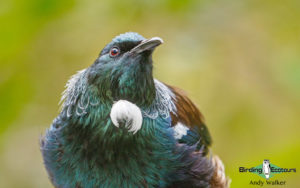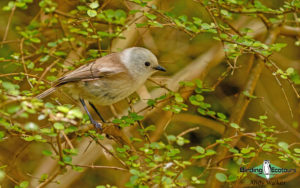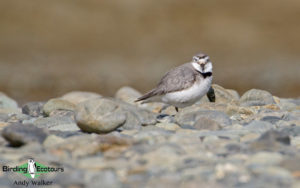New Zealand Birding Tours
Our New Zealand birding tours target many New Zealand bird endemics as well as an assortment of seabird species on our birding pelagic trips. New Zealand or Aotearoa, in the language of the Māori, who are the indigenous people of the region, is an island country in the southwest Pacific Ocean. There are two main islands: North Island and South Island (Te Ika-a-Māui and Te Waipounamu, respectively), and over 600 smaller islands, the largest of these being Stewart Island, with other well-known islands, amongst birders, being Tiritiri Matangi Island, Ulva Island, Little Barrier Island, and Kapiti Island. Our once-in-a-lifetime New Zealand Birding tours visit all three major islands as well as several of the smaller, offshore islands. New Zealand is approximately 1,200 miles (2,000 kilometers) to the east of Australia across the Tasman Sea and about 600 miles (1,000 kilometers) to the south of the islands of New Caledonia, Fiji, and Tonga. Antarctica is 3,822 miles (6,151 kilometers) south of New Zealand. In addition to the above, New Zealand ‘proper’ also consists of the following island groups: Chatham Islands, Kermadec Islands, Three Kings Islands, and New Zealand Subantarctic Islands.
New Zealand is so remote that it was not actually settled by humans (Polynesians) until between c.1280 and 1350 AD, who developed the Māori culture (this compared to Australia, where humans are known to have been present for 65,000 years). The first European sighted the country in 1642, Abel Tasman, a Dutch explorer. In 1840, the Treaty of Waitangi was signed between the United Kingdom and the Māori, declaring British sovereignty over the islands and the country became a colony within the British Empire, then a dominion, and finally gained independence in 1947 with the British monarch remaining the head of state.
Read More About New Zealand
The country is approximately 990 miles (1,600 kilometers) long and 250 miles (400 kilometers) wide and has a massive 9,300 miles (15,000 kilometers) of coast. New Zealand is one of the most scenically spectacular places on the planet. South Island is particularly impressive and is divided down its length by the massive snow-capped and glacier-covered Southern Alps, which has 18 peaks reaching over 9,800 feet (3,000 meters) and is also home to Kea, the world’s only alpine parrot. Mount Cook (Aoraki) is the highest point in New Zealand at 12,218 feet (3,724 meters). The southwestern part of South Island is known as Fiordland, here you find giant and deep fiords (such as Milford Sound). While North Island is not as spectacular as South Island, it is more volcanic in nature with Mount Ruapehu being the highest mountain at 9,177 feet (2,797 meters).
Thirteen national parks protect 11,583 square miles (30,000 square kilometers) of stunning natural scenery and we visit a range of these on our New Zealand birding tours. New Zealand is famous more recently for the Lord of the Rings movies. These films were shot across the islands and showcased the amazing scenery of the country and they are even more impressive in real life. For fans of the movies, a visit to Hobbiton is a must, and some great birds can even be found on the set! New Zealand has a predominantly temperate maritime climate however conditions vary considerably to the east and west of the Southern Alps. Snowfall is common in the east and south of South Island from June until early October.
Following International Ornithological Congress (IOC) taxonomy, v10.2 (December 2020), the bird list of New Zealand stands at 396 species. Of these species, 86 are endemic, 15 are breeding endemics, and 79 are globally threatened. The avifauna of New Zealand also includes species that have naturally colonized from Australia and a great many that were introduced from the UK or Australia by the British as well as migratory species such as Pacific Long-tailed Cuckoo. A high number of seabirds are found foraging and breeding in New Zealand too and this all combines into an interesting New Zealand birding experience. The number of endangered species is of huge concern and massive conservation efforts are underway (and have been for many years) to protect New Zealand’s endemic families and individual species (such as kiwis, New Zealand wrens, New Zealand parrots, Wrybill, Black Stilt, Kakapo, South Island Takahe, Paradise Shelduck, New Zealand Falcon, and Yellow-eyed Penguin).
The list of key species in New Zealand is staggering and exciting but to get the most out of a bird watching visit, several pelagic trips are recommended, such as one in the Hauraki Gulf to look for the recently rediscovered New Zealand Storm Petrel. Albatross and whale watching trips off Kaikoura on the east coast of South Island, are also spectacular experiences and you do not need to go far offshore to get the ‘albatross experience’. If you do not have the desire to get on a boat the Royal Albatross Centre on the Otago Peninsula is a must-visit place to see Northern Royal Albatross, at their only mainland nesting colony.
The highlight species are not all seabirds and shorebirds, there are a great many interesting (in terms of the species and their names!) and endemic forest birds too, such as Little Spotted Kiwi, North Island Kokako, Rifleman, Tui, New Zealand Bellbird, North Island Saddleback, South Island Saddleback, Stitchbird, Yellowhead, Whitehead, Pipipi, Tomtit, North Island Robin, and South Island Robin.
Our 18-day New Zealand: Birding Extravaganza tour starts in Auckland on North Island where we take in the area’s specials such as on a pelagic trip in the Hauraki Gulf with lots of seabirds and a visit to the excellent Tiritiri Matangi Island, a wildlife sanctuary island full of rare endemic birds, we also look for our first kiwis in this part of New Zealand. We then commence our journey south to Pūkorokoro Miranda Shorebird Center where we will look for the highly sought-after Wrybill. A trip to central North Island (such as at Pureora Forest Park) and Kapiti Island will yield more new species including Blue Duck. Crossing Cook Strait, we will arrive on South Island where we will crisscross our way all the way down the island, picking up endemic birds along the way (such as Black Stilt, New Zealand Rockwren, and Kea), as well as fitting in another albatross encounter in Kaikoura. We will visit the sublime Milford Sound and marvel at the spectacle of the Southern Alps. We will eventually reach the far south of Stewart Island and Ulva Island where further pelagic trips will give us yet more amazing seabirds (e.g. Fiordland Penguin) and rare island endemics (such as Yellowhead). Dunedin, the end destination of our New Zealand birding tour, on the southern tip of South Island, is right next to the only mainland colony of Northern Royal Albatross, a giant of a bird and a magnificent way to end this once-in-a-lifetime New Zealand bird holiday.
Download New Zealand Itineraries
New Zealand: Endemic Extravaganza December 2026/2027
